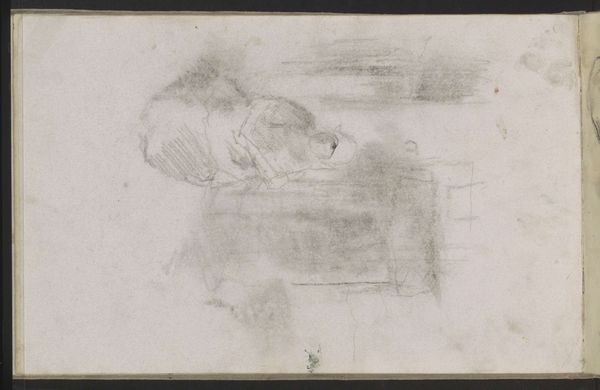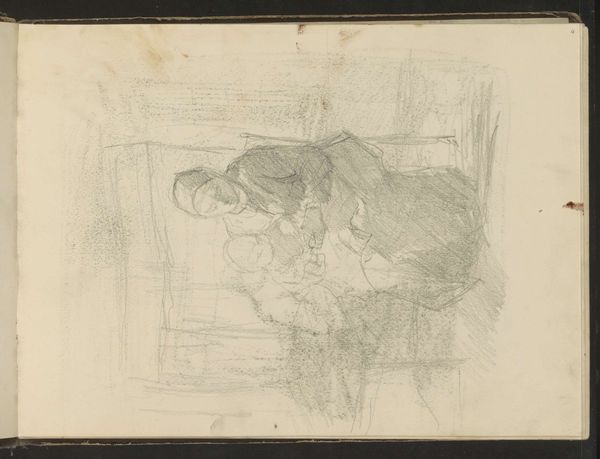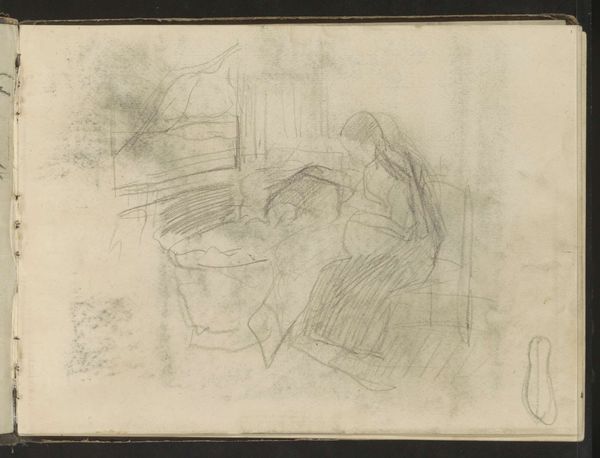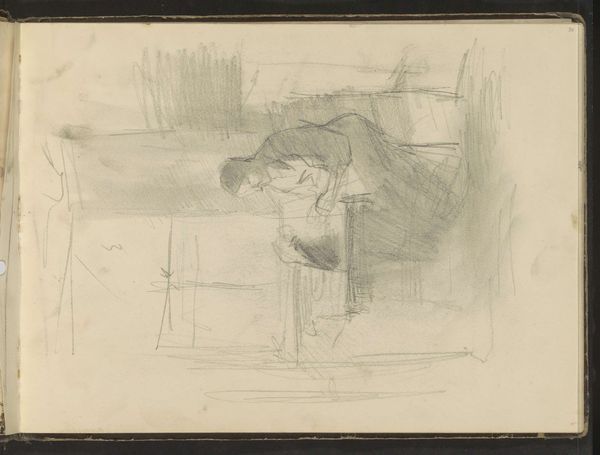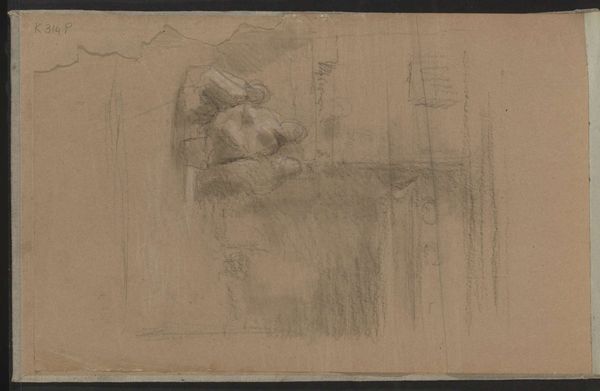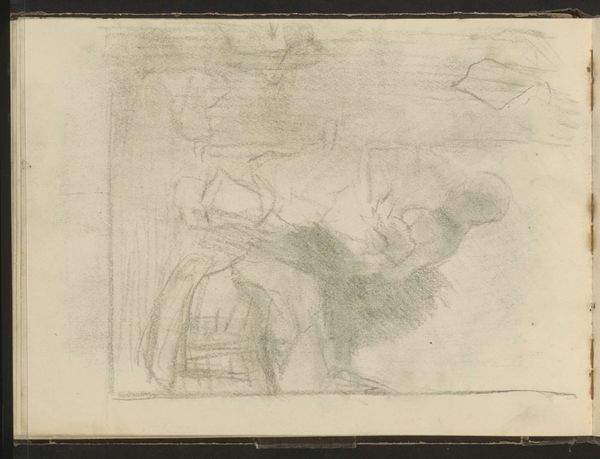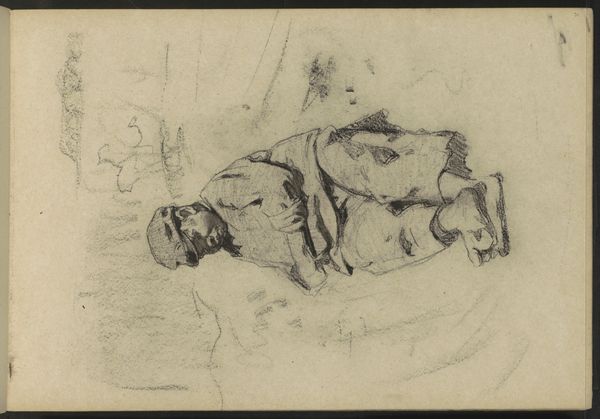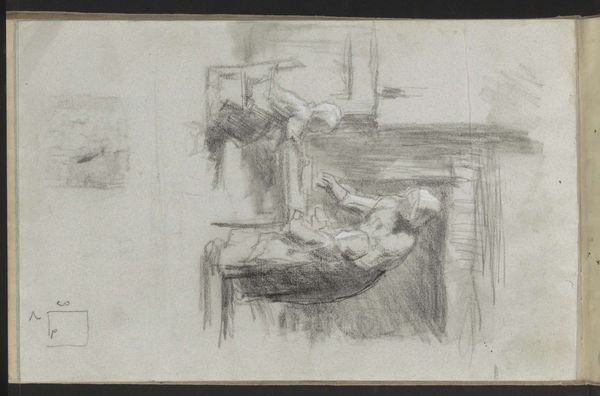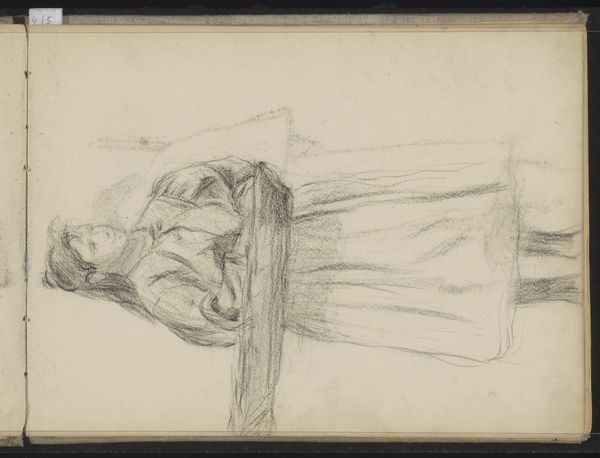
drawing, paper, pencil
#
portrait
#
drawing
#
paper
#
coloured pencil
#
pencil
#
genre-painting
#
realism
Copyright: Rijks Museum: Open Domain
Curator: Albert Neuhuys created this sketch, “Vrouw bij een raamkozijn,” sometime between 1854 and 1914. It’s a genre scene rendered on paper, primarily using pencil and colored pencil. Editor: The immediate impression I get is one of quiet solitude. The woman is shrouded in a soft, grey-toned haze, giving a feeling of being withdrawn, introspective, or perhaps simply fatigued. The blurring of lines adds to this mood, suggesting something unfinished or transient. Curator: I'm drawn to the pose—bent over something in her hands, gazing towards, or perhaps away from, the window's light. Windows, traditionally, symbolize the liminal space between the interior world and external reality, don't they? Her position highlights the woman as a vessel reflecting internal states influenced by her physical environment. Editor: Precisely. Considering the drawing's medium, those quick pencil strokes probably record a specific observation or study, capturing both an intimate moment and a particular quality of light within a specific interior setting. You have the combination of humble material with genre themes about the domestic worker. It almost seems like it reflects certain social conditions and a potential lack of resources. Curator: Given the period in which Neuhuys was active, this domestic portrayal speaks to a deep fascination with rural and working-class life. I believe his choice of subject goes hand in hand with representing broader sentiments within society—perhaps anxieties around social status or celebrating rural virtues like simplicity. Editor: We cannot dismiss, however, how idealized portrayals of labor and simplicity conveniently avoid depicting some tougher realities and hard lives often led at that time, especially for women. There's that careful calibration to keep it picturesque rather than too painfully realistic. The consumption of imagery such as this provided comfort while conveniently side-stepping the demand for real changes. Curator: Yes, you are certainly right about the picturesque aspect. Viewing such scenes then gave, perhaps, more aesthetic comfort than historical awareness or empathy! Still, I leave here intrigued about what story might be embedded within Neuhuys’s sketched scene by the window. Editor: And I remain focused on how that sketch serves as a quiet echo of working life in that moment, skillfully rendered for selective appreciation.
Comments
No comments
Be the first to comment and join the conversation on the ultimate creative platform.
